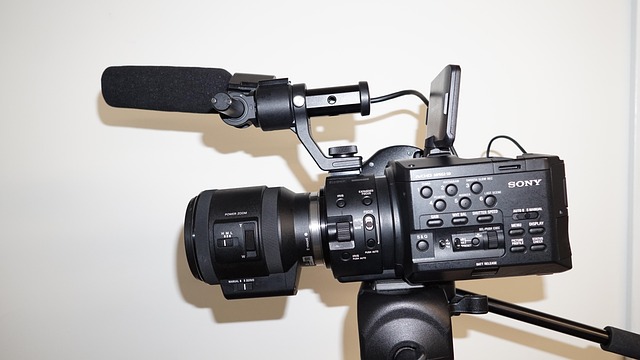In today's interconnected world, seamless cross-platform file sharing is vital for effective communication. Converting video formats, such as Divx to AVI, bridges compatibility gaps between devices and software, ensuring high-quality data transmission. DivX's efficient compression and AVI's wide codec support make this conversion advantageous for multimedia content creators and consumers, facilitating universal access without restrictions. Best practices include choosing compatible formats, optimizing file sizes, and keeping software updated to enhance overall sharing efficiency.
In today’s interconnected world, seamless cross-platform file sharing is essential. Whether collaborating with colleagues or sharing media with friends, understanding the challenges and choosing the right formats can significantly enhance user experience. This article delves into the intricacies of cross-platform file sharing, focusing on converting DivX to AVI—a popular format known for its compatibility across various devices and platforms. By the end, you’ll have a comprehensive guide to ensure smooth and efficient file transfers.
Understanding Cross-Platform File Sharing Challenges

In today’s interconnected world, sharing files across different platforms has become a common need. However, this seemingly simple task often presents significant challenges due to the diverse formats and compatibility issues that arise from various operating systems and devices. For instance, converting DivX to AVI format can be crucial when sending videos to colleagues or friends who prefer different playback formats.
Navigating these challenges requires an understanding of the underlying technologies and a willingness to adapt. Different platforms have their own unique file handling mechanisms, leading to potential problems like incompatible codecs, resolution differences, and even corrupted data during transmission. Therefore, users often need tools that can bridge these gaps, ensuring seamless and efficient cross-platform file sharing without compromising on quality or integrity.
The Role of Convertible File Formats

In today’s interconnected world, sharing files seamlessly across different platforms is a necessity. One significant aspect that enables this smooth exchange is the use of convertible file formats. These formats act as a universal bridge, allowing users to convert various multimedia files, such as DivX to AVI, for compatibility with diverse devices and software applications.
Convertible file formats offer several advantages. They ensure that content creators and consumers can share videos, images, and documents without worrying about platform-specific limitations. For instance, converting a DivX video to AVI format opens up options to share it on various social media platforms, streaming services, or even play it on older devices without the need for additional software. This flexibility is particularly valuable in the digital age where content accessibility and compatibility are paramount.
Why Choose DivX and AVI?

When considering file sharing options, choosing the right format can streamline compatibility across various platforms and devices. Among the many available choices, DivX and AVI stand out as popular and reliable formats for several reasons. DivX, known for its high-quality video compression, offers an excellent balance between file size and visual fidelity—perfect for maintaining the integrity of multimedia content during sharing. Its advanced encoding techniques ensure smooth playback even on slower internet connections.
Conversely, AVI (Audio Video Interleave) is a versatile container format that supports various codecs, making it widely compatible with different media players. This versatility makes AVI an attractive option when aiming to share files across diverse platforms. Moreover, the ability to easily convert DivX to AVI further enhances its appeal. Converting DivX to AVI allows users to access their favorite content in a format that is more universally supported, ensuring a broader audience can enjoy the shared files without compatibility issues.
Advantages of Converting DivX to AVI

Converting DivX to AVI offers several advantages, making it a preferred choice for file sharing across platforms. One of the key benefits is compatibility; AVI (Audio Video Interleave) is a widely supported video format that can be played on virtually any device or media player, ensuring your files reach their intended audience without issues. This is especially important when sharing with friends, family, or colleagues who may use different operating systems or devices.
Additionally, converting to AVI allows for better preservation of video quality and audio synchronization. DivX, while known for its compression efficiency, can sometimes lead to minor artifacts or sync issues. AVI’s robust format ensures these problems are minimized, resulting in a smoother viewing experience for the recipient. It’s a simple yet effective way to enhance file sharing, guaranteeing that your content is accessible and enjoyable for all.
Step-by-Step Guide: Converting DivX to AVI

Converting DivX to AVI is a straightforward process that allows you to share your files seamlessly across different platforms. Here’s a step-by-step guide to help you achieve this easily:
1. Choose a Reliable Converter: Start by selecting a trustworthy video converter tool that supports DivX and AVI formats. Many free options are available online, with some popular choices offering advanced features for more complex conversions.
2. Load Your DivX File: Open the converter and navigate to the “Add File” or “Import” section. Locate and select your DivX video file from your device’s folder. The converter will then process this file for conversion.
3. Select AVI as Output Format: In the converter’s settings, look for an option to choose the output format. Select AVI from the list of available options. This ensures that your converted file will be compatible with a wide range of devices and platforms.
4. Customize Conversion Settings (Optional): Depending on your converter, you might have the ability to adjust video quality, resolution, or other parameters. Choose settings that best suit your needs, keeping in mind the final use of the file.
5. Start Converting: Once everything is set, click the “Convert” button to begin the process. The converter will now take your DivX file and transcode it into AVI format. This step might take a few minutes depending on the file size and complexity.
6. Save Your AVI File: After successful conversion, the converter will typically offer you an option to save the output file. Choose a suitable location on your device to store the new AVI video.
Best Practices for Seamless File Transfer

When sharing files across different platforms, adhering to best practices ensures a seamless experience for all parties involved. One key practice is ensuring compatibility; for instance, converting DivX videos to AVI format can bridge compatibility gaps between devices and applications. This simple step avoids potential issues related to unsupported file types.
Additionally, compressing large files without significant quality loss optimizes transfer speeds, especially over slower internet connections. Tools designed for this purpose can preserve the video’s quality while reducing file size, making the sharing process more efficient. Regularly updating your software and operating system also contributes to smoother transfers by ensuring compatibility with the latest file-sharing standards.
The ability to seamlessly share files across different platforms is paramount in today’s interconnected world. By understanding the challenges of cross-platform file sharing and leveraging convertible file formats like DivX and AVI, users can ensure compatibility and optimal viewing experiences. Converting DivX to AVI offers numerous advantages, from enhanced compatibility to improved video quality. Following best practices for file transfer, as outlined in this guide, will make the process efficient and hassle-free, enabling folks to share content without restrictions. Remember that choosing the right format, like converting DivX to AVI, can be a game changer in navigating the digital landscape.
